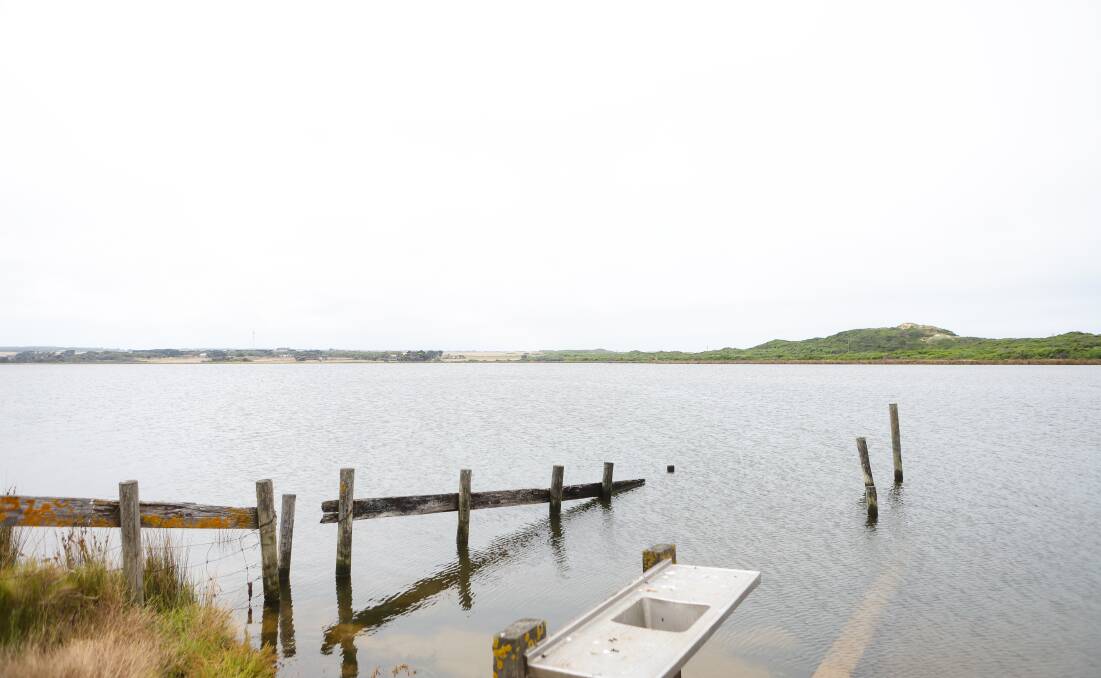
The Deakin University ecologist who led the new study into the cause of algal blooms in the Curdies River says she is optimistic about the future of the waterway.
Subscribe now for unlimited access.
or signup to continue reading
Professor Rebecca Lester told The Standard the task of saving the river was "not going to be easy" and could well take decades, but that it would turn around if the recommendations she and her colleagues had developed were implemented in the coming years.
The Corangamite Catchment Management Authority (CCMA) commissioned the study after a devastating algal bloom - the third in consecutive years - wiped out tens of thousands of fish and other aquatic life in the Curdies River. The report showed levels of phosphorus and nitrogen, the nutrients that fuelled blue green algal blooms, were potentially as high as they had ever been, but Professor Lester said she was confident things would turn around.
"One thing I'd like to emphasise is how committed the community and management agencies are, the agency interaction has been amazing. I haven't experienced projects with so many agencies that are all devoting their time working together to solve problems in this way, so I've been really impressed," she said.
"That's one of the reasons why I think something will come out of this work we've done, which perhaps wasn't the case in 2005."
The last major study of nutrients in the Curdies was undertaken in 2005, and one aim of the Deakin study was to update the earlier data and gauge how much had been done in the nearly two decades since. Professsor Lester said there were three notable changes.
"Since 2005 the wastewater treatment plant at Cobden has changed its discharge policy and no longer discharges straight into the river, and Bonlac stopped discharging their wastewater directly into the river," she said. "The other thing that's different is all the riparian work that's been done by the CMA and landcare groups and farmers."
While the riparian restoration hasn't really curbed the total amount of nutrient getting into the catchment, it has decreased the amount seeping in during "low flow" periods. That has allowed the researchers to identify high flow periods as the main source of new nutrients in the river, prompting new ideas about how to attack the problem.
"We've noticed that most of the nutrient is coming with sediment during these high flow levels, so that's allowed us to say perhaps the most impactful action is to look at erosion sources within the catchment," Professor Lester said.
"We're starting to talk to the CMA about looking at satellite imagery or flying drones around the catchment to try to identify where the hotspots for erosion might be and to start to focus revegetation efforts in those places."
CCMA chief executive John Riddiford said the authority had just secured $230,000 to do a geomorphic study of the catchment and continue riparian work.
Professor Lester said farmers and the dairy industry also needed to do things like move to more appropriate pasture types and wean themselves off chemical fertilisers, but she thought cost and climate factors, as well as deepening knowledge of local ecology would push that process along.
"It's never going to be everybody, but I also think it doesn't need to be everyone. There's enough land there that if different people make different efforts the cumulative impact of that can be quite large," she said.
"I think there's a lot of emphasis on doing something and a lot of these agencies are already making a start on things like nutrient management, so it's now a matter of tailoring those existing programs."
Professor Lester said she thought the recommendations she and her colleagues had produced to fight the nutrient issue were realistic, but they didn't depend upon the various agencies securing a particular amount of funding.
"The way we are trying to work with the various agencies is to say 'this is the next thing we think you should do and will give you the biggest bang for your buck'," she said.
"So it's an order of priority that means that no matter how much funding there is, the most important things are done first and we can keep working our way down the list."
But she said community pressure would be the key to success.
"It's easy for people to think these problems are too big and hard and therefore to give up, but our experience is that people can actually make a big difference, particularly when the community is so galvanised to achieve change," she said.
Professor Lester warned the community to prepare for more major algal blooms over coming years, and that it didn't necessarily mean their work wasn't making a difference.
"Until we are able to prevent the nutrients from going into the system we are going to keep seeing blooms. And that baked in effect from the nutrients that are already in there may mean that would happen anyway, but what we are doing is reducing the number and severity of the blooms."















